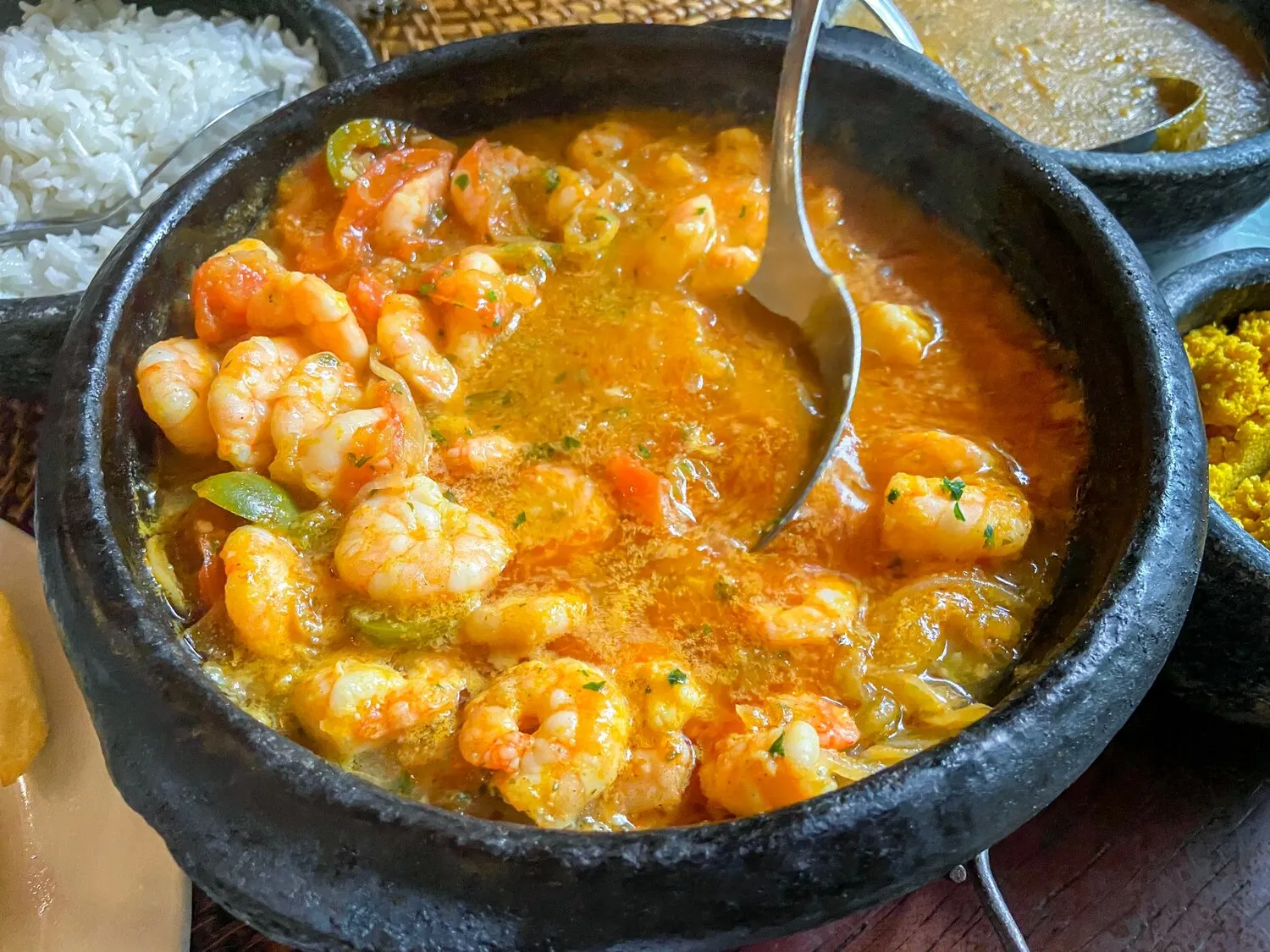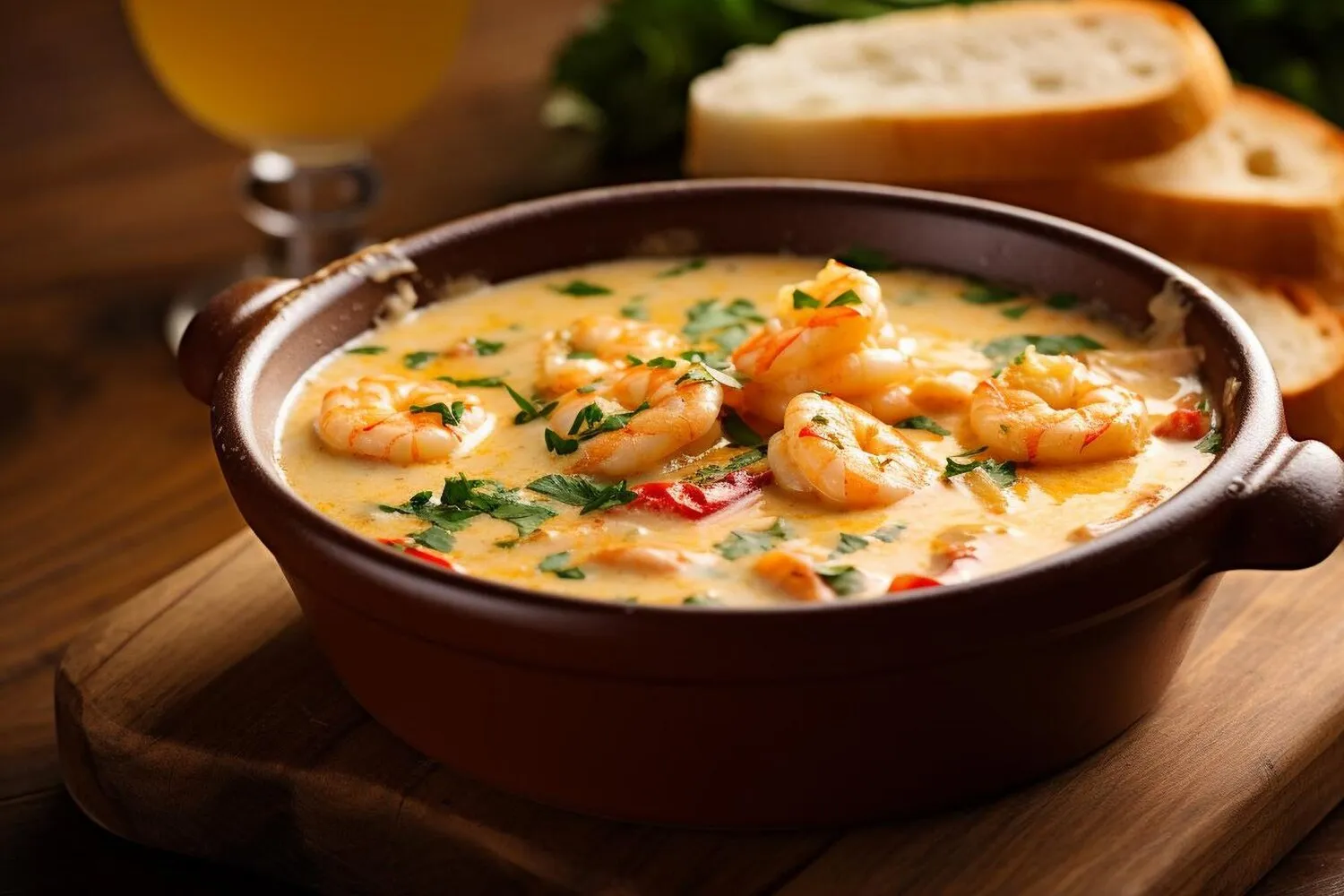
Bouillabaisse Marseillaise
Traditional fish stew originating from the port city of Marseille.
Nutrition Facts
* The % Daily Value (DV) tells you how much a nutrient in a serving of food contributes to a daily diet. 2,000 calories a day is used for general nutrition advice.
Bouillabaisse originated in Marseille, France, as a humble fisherman's stew. It's believed to have started as a way for fishermen to use the bony rockfish and other less desirable catches that they couldn't sell at market. Over time, it evolved from a simple family meal into a more elaborate dish with regional variations, becoming a symbol of Marseille's culinary heritage.
Bouillabaisse is deeply embedded in the culture of Marseille and Provence. It's more than just a meal; it's a social event, a celebration of local ingredients and traditions, and a symbol of the region's maritime heritage.
Regional Identity
Bouillabaisse is considered a quintessential dish of Marseille, representing the city's connection to the sea and its culinary traditions. It is a source of local pride and identity.
Social Gathering
Preparing and enjoying bouillabaisse is often a communal activity, involving family and friends. The dish is typically served in stages, with the broth served first, followed by the fish, encouraging conversation and conviviality.
Ritual and Tradition
There are many traditional beliefs and practices surrounding bouillabaisse, including specific types of fish to use and precise methods of preparation. These traditions are passed down through generations, contributing to the dish's cultural significance.
Bouillabaisse is characterized by its complex and intensely savory seafood flavor, infused with aromatic herbs and spices. The saffron and fennel impart a distinct Mediterranean character, complemented by the richness of olive oil and the sharpness of garlic.
The broth is the heart of bouillabaisse, a rich and flavorful concoction built upon a base of fish stock. It typically includes a combination of bony rockfish like rascasse (scorpionfish), rouget (red mullet), vive (weever), and congre (conger eel), but can also feature other seafood like mussels, clams, shrimp, and crab. Saffron is a crucial ingredient, lending a vibrant color and distinctive aroma. Other key flavor components include fennel, garlic, onions, tomatoes, potatoes, orange peel, bay leaf, thyme, parsley, and olive oil. The stew is often served with rouille, a garlic-saffron mayonnaise, and crusty bread for soaking up the broth.
Fish Selection
The key to good bouillabaisse lies in the variety and freshness of the fish. Include bony rockfish for flavor, and don't be afraid to experiment with other seafood. It is best to source local, sustainably caught seafood.
Saffron Quality
Use high-quality saffron threads for the best flavor and color. Infuse the saffron in warm water or broth before adding it to the stew to extract its essence.
Proper Serving
Serve the broth and fish separately, with the broth ladled into bowls and the fish arranged on a platter. Provide rouille and crusty bread for each diner to enhance the flavors.
Don't Overcook the Fish
The fish should be cooked gently to prevent it from becoming dry and tough. Add the more delicate fish towards the end of the cooking process.
Explore additional Seafood Stew dishes and restaurants
Explore Seafood StewDiscover top dining spots and culinary experiences in Naples.
Explore NaplesLearn more about the food culture, restaurant scene, and culinary heritage of United States.
Explore United States
